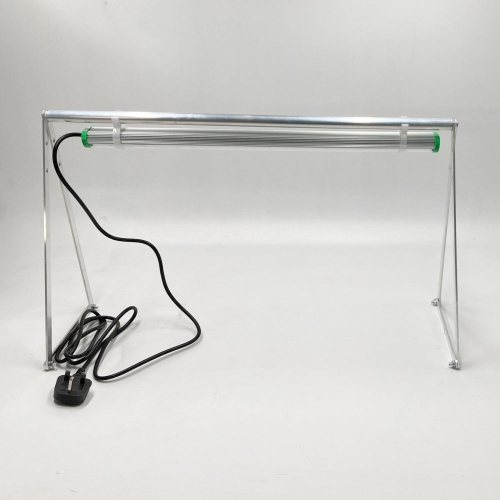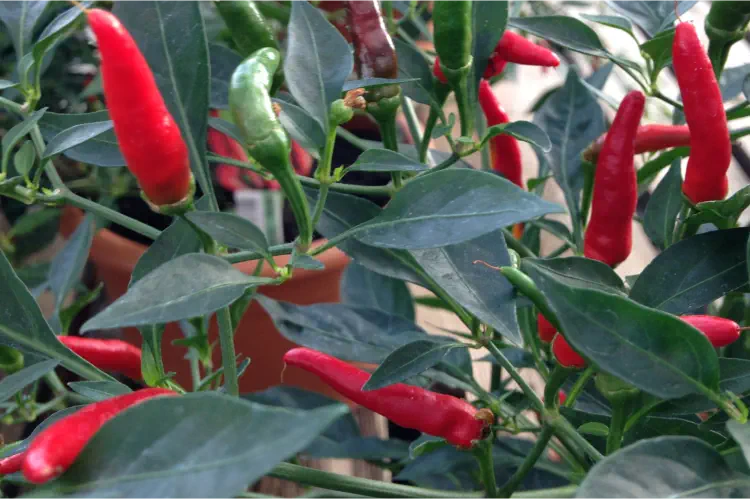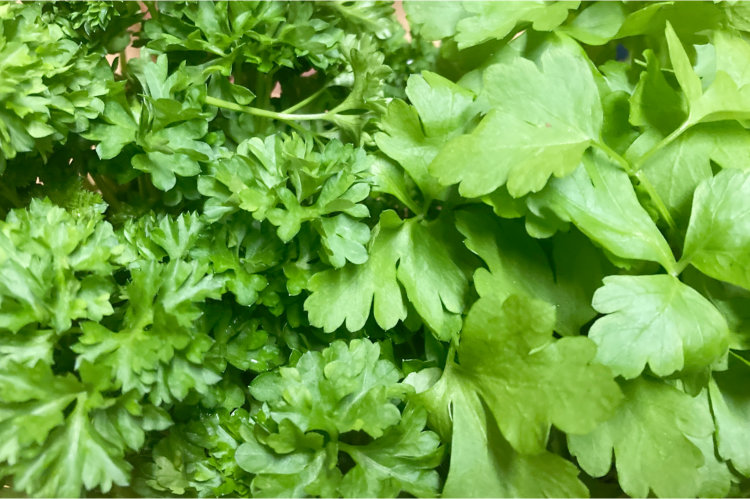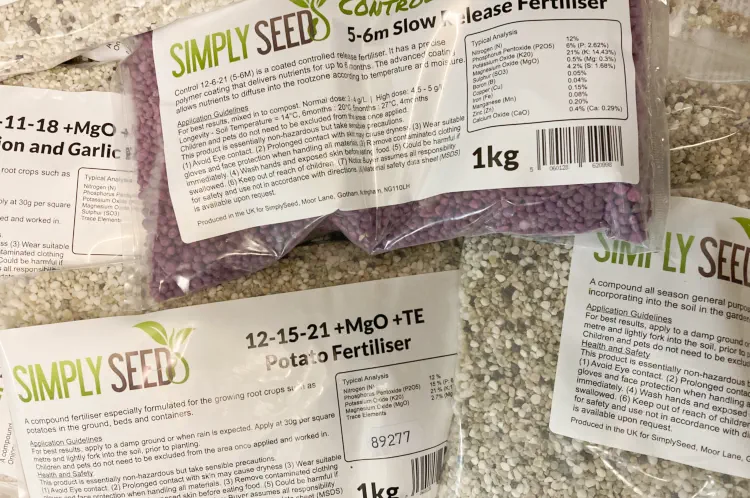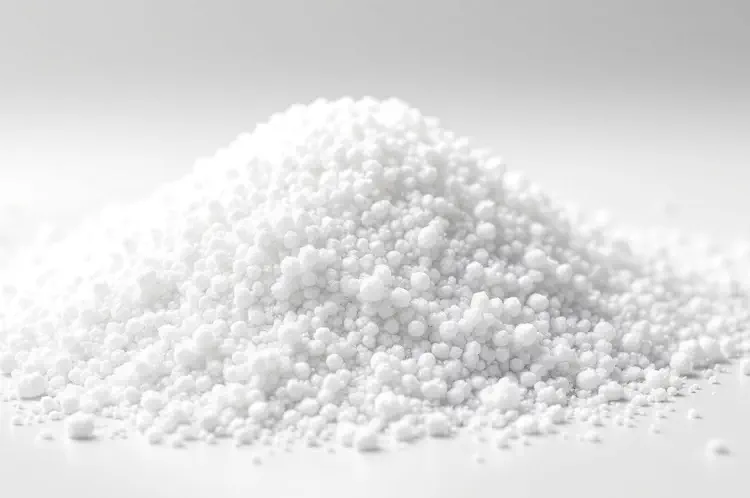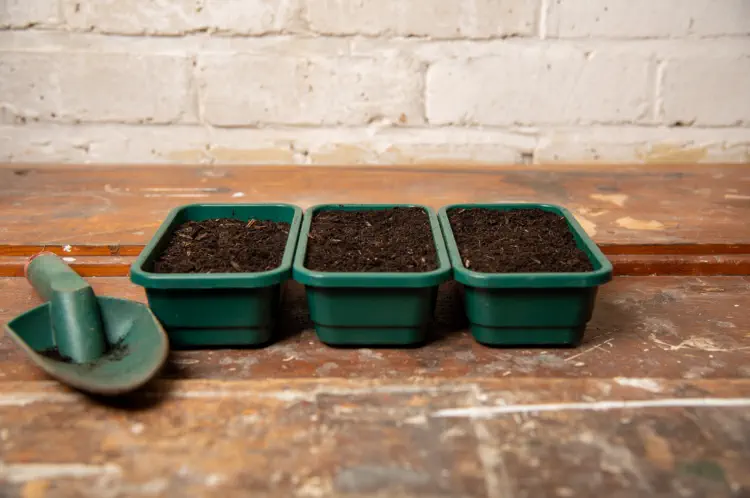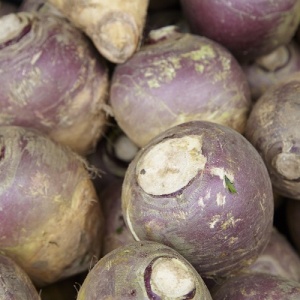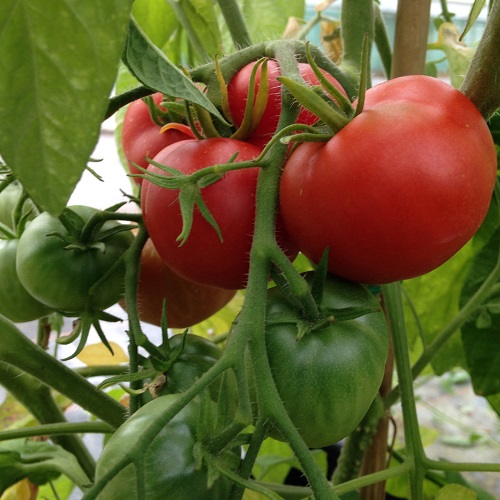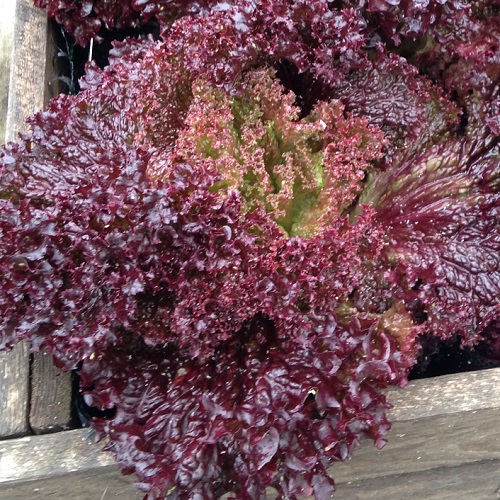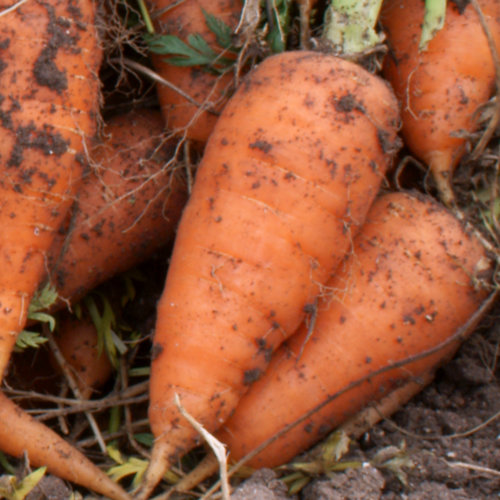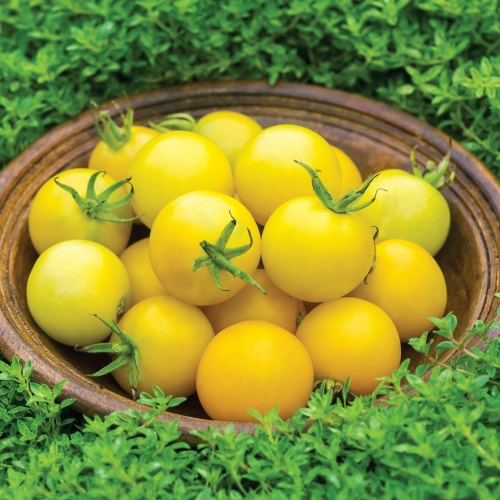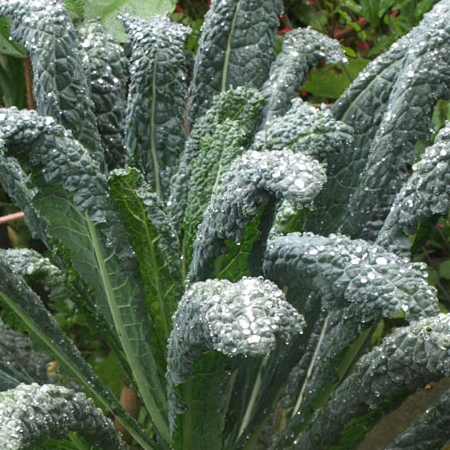Feeding chilli plants is crucial for growth and fruiting. Learn when to feed, what to feed and how to spot deficiencies.
Why Use A Grow Light When Germinating Your Seeds Indoors
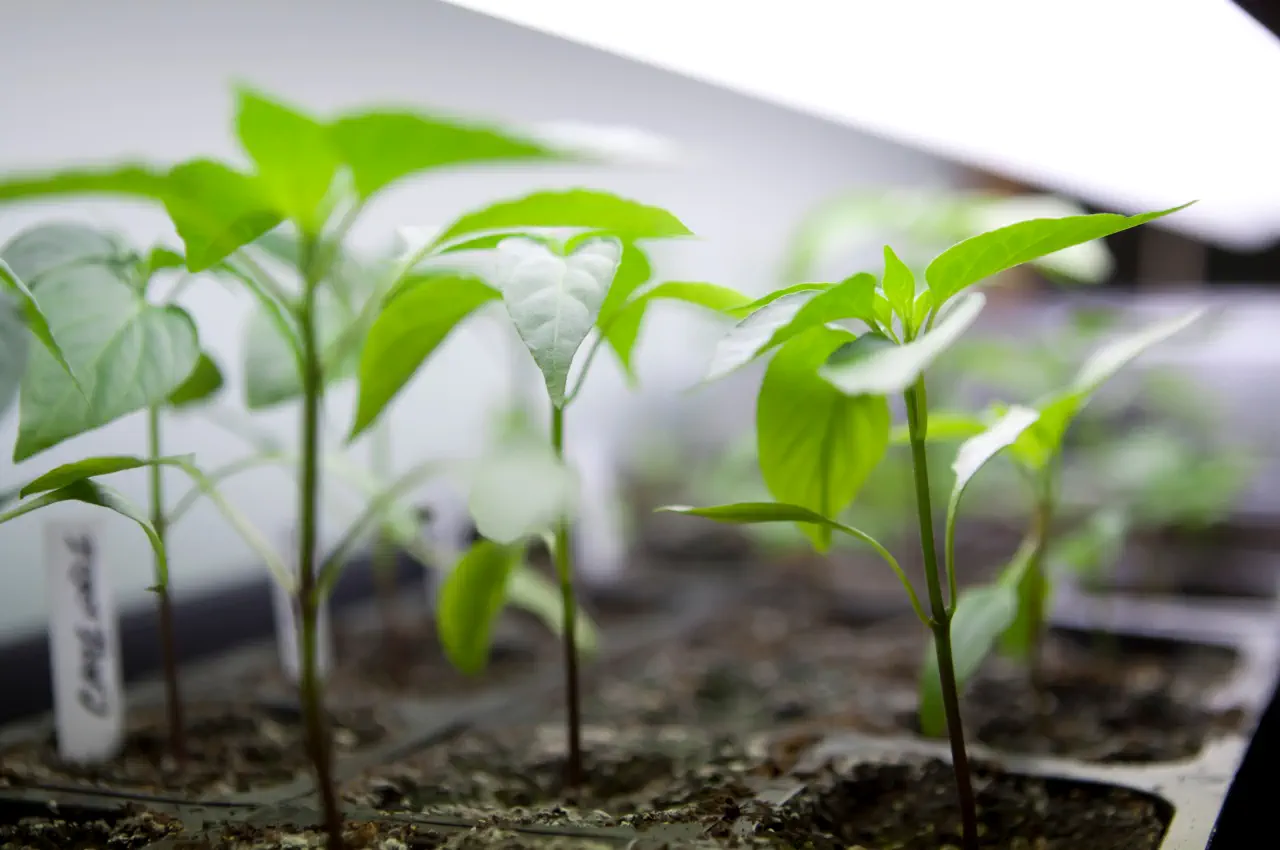
Are you looking to increase your success rate when germinating your seeds indoors? Grow lights are an excellent way to accomplish this! Light is essential to plant growth and proper light ensures that each seedling will grow into a robust plant, so lets look at why using grow lights for seed germination is such a great idea.
Seed germination requires quite a bit of effort and care if it’s going to be successful. It involves creating the perfect conditions in terms of temperature, moisture level, and atmosphere so that those seeds can reach their full growth potential. While light isn't always necessary during the germination process, adding it increases the chances of success significantly. That's where grow lights come in!
Grow lights provide more than just illumination; they offer all sorts of benefits which make them ideal for use when germinating seeds indoors. Whether you’re an experienced gardener or just planting your first few seeds, understanding why these special types of lighting systems work so well will help ensure your plants have everything they need to thrive.
The Benefits Of Using A Grow Light For Indoor Seed Germination
Germinating seeds indoors can be a great way to give your plants the best possible start. Using a grow light is an effective tool for providing the right amount of light and heat needed to encourage seed germination. Grow lights are available in a range of sizes, shapes, and configurations that make them suitable for any indoor environment.
Grow lights provide consistent illumination and temperature control which helps promote healthy growth during the early stages of plant development. They also allow you to adjust their intensity depending on the needs of your particular plants. This means you don't have to worry about giving too much or too little sunlight when germinating indoor-seeds with a grow-light. Additionally, many types of grow lights come equipped with timers so you can set them up to switch off at specific times throughout the day without needing manual intervention.
Using a grow light provides numerous benefits over other methods such as natural sunlight or artificial lighting sources like lamps or LED bulbs. It's important to note that different types of germinating seeds require varying levels of light and warmth - something only achievable by using a specialized grow-light system tailored specifically for each type of seed. With careful planning and strategic use of a quality grow light, it is possible to achieve optimal conditions for successful seed germination indoors every time!
Necessary Conditions For Germination
In order to successfully germinate seeds indoors, certain conditions must be met. Temperature, moisture requirements and light intensity all play an important role in the process.
The optimal temperature for many types of seed germination is between 18-29°C (65-85°F) . When temperatures are too high or low, it can inhibit or completely prevent successful germination. A grow light can help regulate the internal environment of a growing space by providing additional heat when necessary, giving you the best possible results. Additionally, a grow light helps maintain consistent temperatures throughout day and night cycles. Providing more consistent and even lighting than natural sunlight, which is especially beneficial during periods of cloudy weather.
Moisture plays an equally important role in successful indoor seed germination. Seeds require a moist - but not wet - soil surface to accelerate the growth process while preventing mould from forming on their shells. Too much water can drown out the oxygen needed to break dormancy, resulting in failed germinations or weakened plants that don’t reach full maturity. A properly placed and regulated grow light can provide just enough humidity to ensure your seeds have everything they need without becoming overly saturated with water.
Finally, sufficient levels of light intensity are also required for proper indoor seed germination. Grow lights offer adjustable settings which allow you to mimic natural sunlight more closely than any other type of artificial lighting system available today. This ensures that your seeds get exactly what they need during every stage of development, helping them achieve maximum potential even when grown under controlled indoor environments.
Supplementing Natural Sunlight
Grow lights are a great way to supplement natural sunlight when germinating your seeds indoors. Not only do they provide artificial sunlight, but they can also provide more consistent light than natural sources such as the sun or a window sill. This is especially important for plants that need longer days of artificial lighting in order to grow and thrive. By using supplemental lighting, you can keep your seedlings healthy and give them the best chance at success.
In addition to providing additional light for growth, some gardeners use their grow lights strategically throughout the day to simulate outdoor conditions like early morning dawn or evening dusk; this helps encourage stronger root development and help prevent stunted growth due to inadequate indoor sunlight levels. Taking advantage of this feature can make all the difference between successful seedling establishment versus failure.
Types Of Lights For Growing Indoors
When germinating your seeds indoors, there are three types of lights to choose from: led grow light, fluorescent grow light, and high pressure sodium light. So you can choose one that’s perfect for the type of indoor seeding you’re doing. Each type has its own benefits as well as drawbacks that should be considered when deciding which is best for you. Lets delve in a little deeper...
LED (light emitting diode) grow lights provide bright colours with excellent colour rendition and a wide spectrum of wavelengths. This makes them ideal for growing plants in small spaces such as greenhouses or apartments. LED bulbs use very little energy while providing intense illumination at any time of day or night. The downside is the higher price tag associated when purchasing an LED light compared to other options.
Fluorescent grow lights have been used by gardeners for decades due to their affordability and ease of installation. They also use less energy than other lighting sources and can last up to 10 years if properly maintained. However, they don't generate enough heat or intensity needed for certain stages of seed growth so it's important to consider this before using one.
High Pressure Sodium Lights produce intense artificial light but require more energy than LED or Fluorescent bulbs do. They're typically used in large-scale growing operations because they offer consistent coverage over larger areas - however they may not be suitable for smaller home applications where space is limited. Additionally, these lamps need replaced regularly due to shorter life spans than other forms of lighting.
Overall, each type of grow light offers advantages that must be weighed against potential drawbacks before making a decision about what’s right for your indoor gardening project. No matter what type of grow light you choose, it will improve the success rate of your indoor seed starting by providing just the right amount and type of light needed for healthy germination and strong root systems. Light set ups help protect against temperature fluctuations due to changes in ambient temperature and provides additional protection from diseases caused by bacteria, fungi or viruses present in soil or water used for growing plants indoors. It’s important to research all possibilities carefully before investing in any equipment so you can make an informed choice about what will work best for you.
Choosing The Right Grow Light For Successful Indoor Seed Germination
Choosing the right grow light for successful indoor seed germination is essential. LED grow lights and grow light bulbs are popular options, each offering their own advantages and disadvantages. LEDs are typically more energy efficient while bulbs offer a higher intensity of light to support photosynthesis and faster growth rates. When selecting which type of lighting to use, consider the size of your growing space as well as the types of plants you wish to cultivate.
Seed starting kits can be purchased from most garden centres or online retailers that include all necessary components for setting up a proper environment for seed germination. These kits often come with instructions regarding how much light should be provided and what temperature range to maintain in order to ensure optimal conditions for germinating seeds indoors. Additionally, many of these kits come with adjustable reflectors so that growers may adjust the amount of direct light on their seeds without having to purchase additional equipment.
Using a quality grow light when germinating seeds indoors will help ensure success by providing an even spread of illumination across your entire growing area. Proper lighting also helps promote strong root systems and vigorous foliage development during early stages of plant growth, making it easier to transition newly sprouted plants outdoors or into larger containers once they have established themselves indoors. Ultimately, choosing the right grow light can make or break any gardening project; investing in good-quality equipment upfront can save time and money down the road!
Setting Up A Grow Light System
When it comes to setting up a grow light system for seed germination, there are a few key components you'll need. First, choose the type of bulb that best suits your needs - fluorescent, LED or HID (high intensity discharge). Fluorescent is usually used in small-scale setups as they don't emit much heat and use less energy than other types of bulbs. LEDs provide high efficiency with low power consumption while HIDs offer greater intensity and coverage area.
Once you've selected the right type of bulb, position it at an appropriate distance from the plants so that all areas get good exposure to the light. The correct spacing depends on the type of bulb being used; however, generally speaking, larger bulbs should be placed further away from the plants to prevent burning them. Finally, make sure to adjust the angle and height of your lights regularly as this will help ensure consistent growth throughout each plant's life cycle.
Having a well-designed grow light setup is essential for successful seed germination indoors. By following these steps, you can create an ideal environment for healthy plant development and increased yields.
Positioning The Lights For Maximum Benefit
Now that you have set up your grow light system, it's time to position the lights for maximum benefit. When positioning the lights, there are a few key things to keep in mind. First and foremost is that the plants need enough light exposure to thrive. It's important to place them above or near your seedlings so they can absorb an adequate amount of light without becoming too hot or cold. Additionally, make sure the bulbs aren't too close together as this may cause uneven growth or even damage to your plants.
It’s also essential to pay attention to how much light each type of plant needs when positioning your lights. Different plants will require different amounts of lighting depending on their size and species. For best results, adjust the height of the lights accordingly for each individual plant - either higher for larger plants needing more light or lower for smaller ones requiring less. Doing so ensures optimal conditions for healthy growing habits.
When done correctly, setting up and positioning a grow light system can provide many benefits such as increased germination rates and improved yields from healthier crops. With careful consideration given to placement and other factors, you'll be able to ensure that your seeds get off to a great start indoors with plenty of natural-looking sunlight!
Cost Of Running Your Grow Lights
The cost of running grow lights for indoor gardening can vary significantly, depending on the type and size of the light. Generally, LED lights are cheaper to run than other types of lighting. However, it is important to consider how much energy the lights use when making a choice about which type of light to purchase. The wattage rating should be taken into account, as this will determine how much electricity will be used by the light over time.
When calculating the cost of running your grow lights, there are several factors that need to be taken into consideration. Firstly, make sure you know what the wattage rating is for each bulb or fixture being used in your setup. Secondly, if possible try to find out how many hours per day you plan on using your grow lights so that you have an accurate estimate of their usage over time. Lastly, take into account any additional costs such as replacement bulbs or fixtures that may need replacing due to wear and tear from regular use.
All these factors can add up quickly; however, investing in high-quality equipment can help reduce overall costs associated with running your grow lights in the long term. With careful planning and budgeting, growing indoors doesn't have to break the bank!
Timers & Controllers For Lights
Using a timer or controller with your grow light is an important part of successful seed germination indoors. Light timers and controllers allow you to control the length, intensity, and frequency of exposure for your seeds. By controlling these variables, you can provide the optimum conditions for optimal growth and germination.
A light timer ensures that the lights turn on and off at specific times each day; this helps simulate natural daylight so that plants receive regular periods of darkness and light. A light controller allows you to adjust the amount of light exposure based on how much energy your plant needs throughout its lifecycle. This helps promote more even growth by providing consistent levels of energy without over-exposure or under-exposure.
When using a timer or controller with your grow light, it's important to pay attention to any changes in temperature within your growing environment as they can affect the rate of seed germination. Additionally, be sure to monitor moisture levels since too little water can inhibit germination while too much can lead to disease or mould development in your seeds. With proper use of a timer or controller along with close monitoring, you'll be well on your way towards healthy seed germination indoors.
Conclusion
In conclusion, using a grow light to germinate your seeds indoors is an effective and efficient way of ensuring the success of your indoor seed starting. Grow lights can provide all the necessary conditions for germination, help improve the success rate by providing consistent lighting, be tailored to fit any budget or space limitation with careful selection, have adjustable positioning if needed, and even supplement natural sunlight in some cases. With proper installation and use of timers & controllers, you'll not only get better results but also save on cost compared with traditional growing methods. So why wait? Get started today and let those little sprouts shine!

